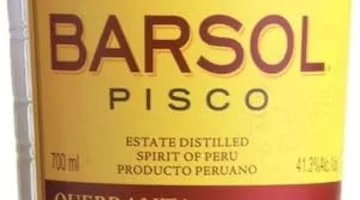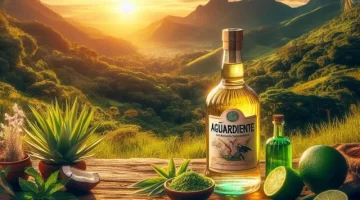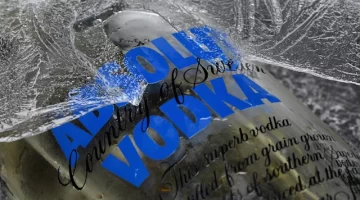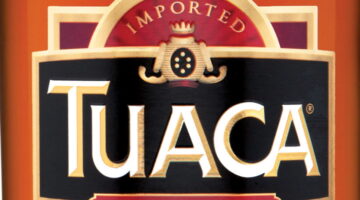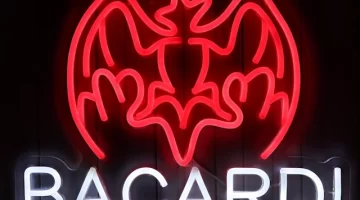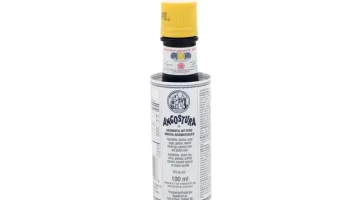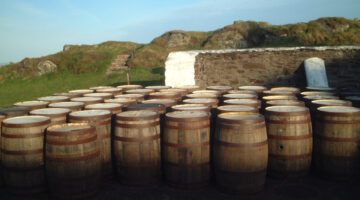Cazadores Tequila Distillery Tour
Travel Distilled tours the Cazadores tequila distillery in Jalisco, Mexico, the heart of tequila country.
‘Tequila is not an ordinary spirit,’ my guide Tania Oseguera at the Cazadores tequila distillery tells me. ‘It is a holy spirit. The agave was considered a holy plant.’

To some it still is, particularly the blue agave that produces tequila, Mexico’s great gift to the world of spirits. I’ve come to Arandas, 65 miles due east of Guadalajara in the highlands of Jalisco, to tour the Cazadores tequila distillery and taste some of their tequilas. My guides are Tania, who is the Cazadores Brand Ambassador and a Master Tequilier, along with Jesús Susunaga, the Master Distiller himself who has been with the company for 13 years. Well if tequila is a holy spirit, who better than a guide named Jesús to show you around?

Cazadores Tequila Distillery Tour
‘Back in 1922 our founder wanted to create a smoother tequila,’ says Tania. ‘He only made it for his family and his friends. He wasn’t interested in whether it would sell or not. He just wanted a smoother tequila to drink. Back then the tequila was rough. That’s when the tradition of lime and salt began, to make it more drinkable.
‘What makes Cazadores proud? We are a highland distillery. Our original recipe dates from 1922. You probably noticed when you were driving here that the soil down in Guadalajara is grey. When you get up here in the highlands it is bright red. The highlands are also five degrees cooler. The agave are therefore slightly bigger and juicier, with more citrus tastes. And the demand for highland tequila means the prices are slightly higher.
‘Cazadores only uses highland agave, which not all highland distilleries do. Some bring in lowland agave but as long as the tequila is made here, they can still call it highland tequila. We have the same agave providers as Patron.’

As we start to tour the distillery, Tania makes a quick diversion to show me their laboratory. ‘It is one of the best in the industry,’ she tells me. ‘It is so accurate in its tests that it meets government requirements and other tequila makers use our laboratory for their tests because of the high standards.’
As we head for the fermentation room, we stop to watch a truck deliver a batch of blue agave, ready to be cut up and then cooked, the first step in turning these agaves into tequila.

‘Tequila doesn’t have to be 100% blue agave,’ Jesús says. ‘51% blue agave meets the minimum legal requirement and it can still be called tequila. The other 49% can be any sugar source except for agave. So 100% blue agave indicates the best quality.’
That’s why, when you’re buying tequila, look for ‘100% blue agave’ on the label. Anything else and you don’t know for sure what you’re getting.

We then see the fermentation process, where the cooked agave bubbles in vats like a witch’s cauldron as it interacts naturally with the yeast and the sugar turns to alcohol. Cazadores has its own proprietary yeast, which is kept frozen and cannot be replicated by anyone else.
‘We ferment for 7-9 days,’ says Jesús, ‘ which is a long time, one of the longest in the industry. We have four days of alcohol fermentation, and the rest is malolactic fermentation This gives a buttery sweetness. Other people take a short cut to save money and add glycerin to try to get the same taste.’
I noticed that in the background as the fermentation was taking place, the sound of Mozart was playing.
‘The yeast likes Mozart,’ Tania laughs. ‘They tried heavy metal once but the result was a bad batch. We tried mariachi but that didn’t work!’
After fermentation comes distillation.
‘We have a very slow distillation,’ Tania explains. It’s 8 hours for the first distillation and 14-16 hours for the second. Tequila has to be distilled at least two times for it to be called tequila. After the second distillation it comes out at 120 proof, or 60% ABV. After the first distillation you lose 10% to the angels. In the second distillation you lose 50%. If we did a third distillation we would lose another 50% again.’
Cazadores is then stored in new American oak barrels.
For their most expensive tequila, Corzo, they use 22 kilos of agave per bottle, which is twice as much as normal. It also has three distillations, which really concentrates the flavor, and it is aged in French oak barrels, which are more expensive than American oak.
If you buy a barrel of Corzo through the Cazadores single-barrel program you come and make your own blend, your trip to Mexico is paid for, and Tania or one of her colleagues will meet you at the airport to bring you to the distillery.

The tour ended, naturally, with a tasting of some of the Cazadores range of tequilas, led by the experienced noses and palates of Tania and Jesús. We use the official style of tequila tasting glasses which were designed by a committee of experienced tequila makers. One thing you should not do when drinking a good tequila is use a shot glass. If you can’t get a tequila glass – though you can buy them on Amazon – then a sherry glass would make a good substitute, while Tania says: ‘Don’t tell anyone but I prefer to use a cognac glass. It’s easier to see the legs.’
After cleansing the palate with a glass of water, we were ready for the first sample, the standard blanco tequila.
‘You’re checking appearance, aroma and taste,’ Tania reminds me. ‘Against the white tablecloth you can see that the appearance is pure white, with some reflections. Take a deep sniff, get your nose right into the glass and breathe deeply. It smells like lime, green apples, green agave juice. Next you taste it, and I’m tasting pepper, and citrus peel.’
Tania then explained why tequila is called tequila. The first spirits distilled from agave plants were called mezcal, a word which means agave cooked in an oven. Over time, many Mexicans developed a taste for the mezcal made from the blue agave plant, which was smoother and more full of flavor than other agaves. The best of all came from around the town of Tequila, so people began to specify they wanted a Tequila mezcal. Distillers naturally started to feature the name of Tequila on their labels, and eventually tequila became a distinct category of mezcal, governed by various legal requirements as to where and how it could be made.
Next for tasting was a reposado. Reposado simply means ‘rested’, and is a blanco tequila that has been rested in barrels for between two months and one year. The resting period and the type of barrel varies with each distillery, depending on the flavor profile they are looking for.

‘The reposado is our most popular tequila and makes up 60-70% of our business,’ says Tania. ‘The ageing gives it a light straw color. On the nose you can still detect the agave but also some vanilla and a little pear. To taste it, it’s smoother than the blanco, more vanilla, and honey-sweet.’
If you age a blanco for more than one year but less than three years then it becomes not a reposado but an anejo, or aged tequila, and that’s what we try next. The color is more golden, and the aromas more complex as we move into whisky territory, with smells of cinnamon, butterscotch and raisins, and tastes of spicy cinnamon and sweet maple.
If your anejo is in the barrel for even a day over three years, it becomes an extra anejo, or extra aged. The Cazadores Extra Anejo is only made for their export market, which is primarily California, followed by Canada and Europe, especially Germany and the Netherlands.
‘On the nose,’ says Tania, ‘I’m getting coffee, orange and oak from the oak casks. In the mouth it’s more like a good Scotch, with dried fruits, almond, chocolate and many other flavors now coming through.’
Tania’s Tequila Tips
Try a Paloma cocktail with anejo. Most choose reposado.
With the anejo and extra anejo try using orange and cinnamon around the rim of the glass instead of lime and salt.
Serve blanco with lime, anejo with orange, reposado with grapefruit.
Cazadores Tequila Distillery Tour: More Information
You can buy Cazadores tequilas at Caskers and at Master of Malt.
Cazadores Tequila Distillery Tour: More Information
You can buy Cazadores tequilas at Caskers and at Master of Malt.













